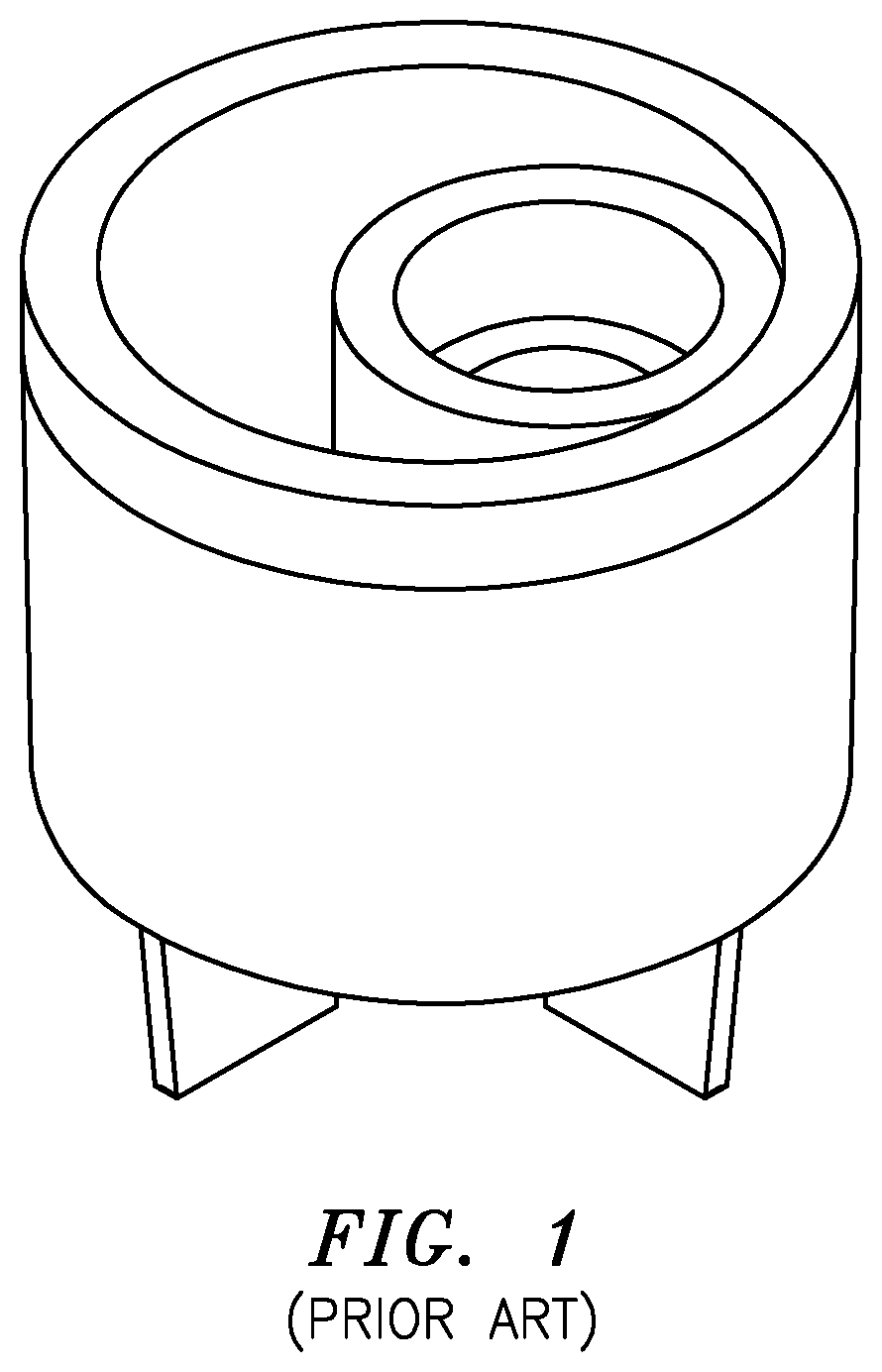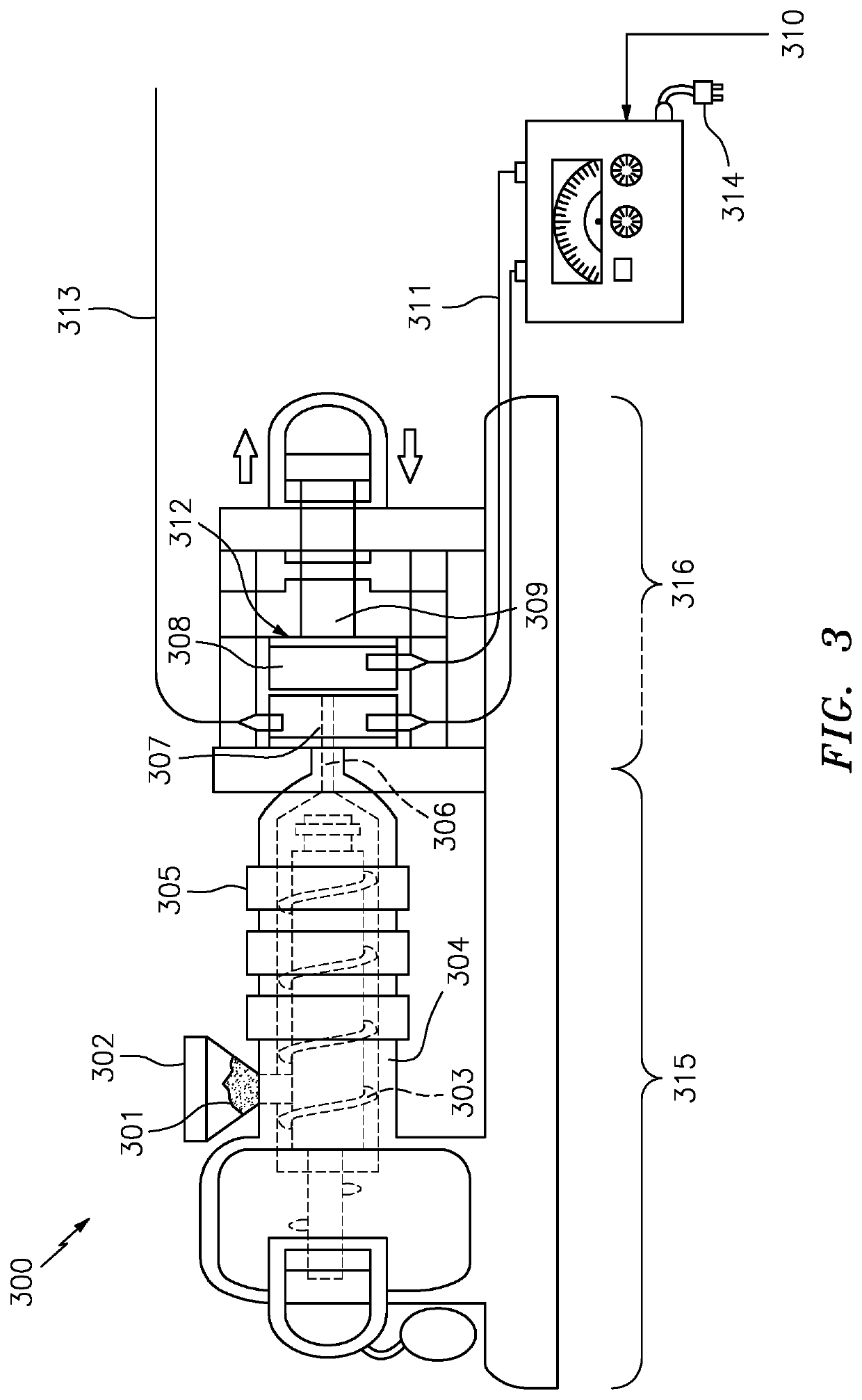Magnetic plastic induction
a technology of magnetic plastics and induction devices, applied in the direction of coatings, etc., can solve the problems of brittleness, heavy product, and inability to produce fully charged products,
- Summary
- Abstract
- Description
- Claims
- Application Information
AI Technical Summary
Benefits of technology
Problems solved by technology
Method used
Image
Examples
Embodiment Construction
[0044]The present invention will now be described with reference made to FIGS. 2-9.
[0045]Measuring the magnetic strength of something is quantified as a Gauss number. This determines the magnetic grade. A higher number indicates a stronger magnet. The magnetic material inside something qualifies as maximum energy product and is expressed in MGOe (megagauss oersteds) and represents the strongest point which is defined as BHmax. Another measurement is described as “pull” force which is how much force is exerted to pull a magnet away from something. The pull force is valued with the specific grade labeled as “N” followed by a number.
[0046]There is even another measurement to determine the magnetic field of something and where exactly the strongest point is. It is expressed as a Tesla (1 Tesla=10,000 Gauss). The Tesla measurement is for larger magnetic field measurements and Gauss for smaller measurements. This application making guitar picks and other products, particularly small produ...
PUM
| Property | Measurement | Unit |
|---|---|---|
| temperature | aaaaa | aaaaa |
| temperature | aaaaa | aaaaa |
| electrical conductivity | aaaaa | aaaaa |
Abstract
Description
Claims
Application Information
 Login to View More
Login to View More - R&D
- Intellectual Property
- Life Sciences
- Materials
- Tech Scout
- Unparalleled Data Quality
- Higher Quality Content
- 60% Fewer Hallucinations
Browse by: Latest US Patents, China's latest patents, Technical Efficacy Thesaurus, Application Domain, Technology Topic, Popular Technical Reports.
© 2025 PatSnap. All rights reserved.Legal|Privacy policy|Modern Slavery Act Transparency Statement|Sitemap|About US| Contact US: help@patsnap.com



